– Paul Rogovitch: Good afternoon and welcome to History Sandwiched In. We’re really glad to have you here at the Wisconsin Historical Museum. And today I have special pleasure in welcoming back our speaker who was here once before sometime back. Her name is Sarah White. Many of you know her. She’s an author and personal historian, and she’s the author of this wonderful book, Madison Women Remember. And she’s going to talk about this book and personal histories. So please welcome to History Sandwiched In, Sarah white.
[APPLAUSE]
– Sarah White: Thank you.
[MICROPHONE FEEDBACK]
What was that? Is it safe to go over here?
[LAUGHTER]
That will wake you up. Well thank you for having me here, and, frankly, I don’t talk about this book as much anymore because I have a couple other projects that are newer so it’s really nice. Kind of a like a trip down memory lane myself to talk about Madison Women Remember again. What I want to do for you today is to create the state of mind I was in as I was working on this book in the summer of 2005.
Driving around town, conducting interviews with women, driving home, transcribing. This sort of fog of time layered upon time that was starting to occupy my mind. Every place I drove past would be like, oh, yeah, that’s where Bev snuck out the window, and over there, that’s where Helen fell into the rose bush and story after story layering on each other. I’m going to read snippets from the book to sort of introduce you to our characters and then talk about how the project unfolded and then get back to some more stories from the book or reminiscing with you if you have questions or want to comment from the floor. I will say the lights are in my eyes a little bit that make you all just a friendly dark out there so if you want to get my attention, wave a little bit or call my name or something because I don’t want to miss clues from you that you have something you want to add. And it will be more fun for everybody if it’s more of an interactive presentation. So feel free to step in with comments. If we had more time, I would start by reading a little introductory piece from each of the 12 women in the book. For a shorter presentation, I will skip a few and introduce you to some of the people. And I will also say, I haven’t yet mastered the art of timing my comments to the slides because I’m fairly spontaneous in how I speak.
So I just have this carousel of pictures that will just keep you, you’ve probably seen your way through them once or twice already. At some point I’ll say a name and you might recognize it as someone you’ve seen on screen, but expect what I’m saying to tie to what’s on screen, because it won’t. So to get started. The first woman I interviewed was Ruby Helleckson Hubbard who grew up on East Mifflin Street, right behind Breese Stevens Field. She was born in 1915. She’s still with us today, although her health is beginning to fail and she’s in a nursing home. She was still living in the home that was right next door to the house she was born and brought up in as a young lady. She married, bought the house next door and lived in it for the next 80 years of her life, pretty much. The next person I interviewed was Helen Blasic Richter who lived on West Dayton Street, born in 1916. A friend of Ruby’s that she introduced me to.
And I won’t read to you from their work for this reason: I was just getting my chops together as an interviewer when I did those first interviews. For better or worse I decided that I would start with the oldest people and work my way to the youngest with the general idea that the oldest people might not be with us so better go first. The down side of that decision is that they got me at my least experienced as an interviewer. And so I don’t feel that the first couple of interviews have as many interesting anecdotes and stories. I hadn’t become as good at drawing stories out of people. So I want to dive in beginning with the next person I interviewed, Anne Stassy Bruno. She grew up in the Greenbush. She was also born in 1916. And here’s where her story begins. “A happy but protected childhood.
I always had other children to play with, and we were always into something. Rolling skating or hide and seek, just anything you could do near your home. We played with dolls, played house. We would take care of younger children like the — next door. They’d be assigned to us to keep them occupied while the parents were busy. We weren’t permitted to learn how to ride a bike.” This is the girls. “A friend of ours came over. He had a bike and he said that he would take us for a ride on the handle bars. My sister was a little more courageous than I was, and he took her around the block.
When my father heard about that, there was, as we say, hell to pay. We never did learn to ride a bike. That was always a disappointment. We didn’t bathe at the beaches. That was a no-no. Just something we did not do. Later, after marriage, we frequented the beaches.” So think about these people growing up down a block or two from the park that we know as Brittingham Beach and the girls wouldn’t swim because it just wasn’t something girls would do. Now I’ll go forward a few years to read to you from Rosemary McDermott. Her maiden name was McGilligan, and she was born in 1925.
So we’re up 10 years from the last batch. And she grew up on Doty and West Main, very near here. Page 34. Oh, I thought this was so funny. She couldn’t have been more than about four or five years old the time she’s remembering. “A strange thing I remember about growing up was Joyce’s Funeral Parlor on West Washington Avenue. Everybody who died from the 4th ward was buried by Joyce’s Funeral Parlor. And the wakes, we looked forward to going to the funerals because the wakes were so wonderful afterwards. You went back to somebody’s house and there was a lot of friendship and drinking and food galore. With visitation at the funeral parlor there were usually two nights.
I was too young to be left alone so I went to all the wakes, and I could hardly wait for somebody to die. Another party, that’s how I looked at it.”
[LAUGHTER]
You can understand that, right? I’m going to leap forward over Anita Parks and Donna Lapley Fisker, not for any reason except to save time, and Jackie Mackesey, maiden name Jackie Gregory. We’ll get some stories from them in a little bit. But next I want to read about Winnie Lacy, who is in the room with us. Take a bow Winnie, if you like. So she grew up on Williamson Street. And we were talking about neighborhood stores and characters when she gave me this story.
She said, “Not long ago I was in the Williamson neighborhood with my granddaughter telling her what used to be where, and she just could not believe there were so many grocery stores. There was a grocery on the corner of Ingersoll, another across the street from where Mother Fool’s Coffee Shop is now and a grocery store at Few Street and Fleisch’s in the middle of the block.” And she goes on to name store and store. “The little one where Mother Fool’s is, that’s where my mother always bought her meat. My mother was quite a card. One time she was going to get a pound of hamburger, she made some comment about the price and the butcher said, well if you drag it home behind you like a puppy dog, you can have it for free. They double wrapped it and tied more string on it, and they stood and watched her drag it across the street. She got her pound of hamburger free.”
[LAUGHTER]
I can picture that.
I love that story. The next woman I interviewed was Bev Fosdal. Michelson was her maiden name. And she grew up on campus. She was born in 1942 so this story comes from the early ’50s. And she was a child of divorce. One of the things that struck me as I was conducting these interviews is that I found more stories of divorce and remarriage than I expected. I somehow thought that was something that got started in the ’60s and that people just put up with whoever they married up until then. Well to a point they did, but beyond a point they didn’t. And it was eye opening to me to read about the life experience of these women who had to figure out how to provide for children and family on what they could earn.
And Bev was the daughter of a divorced mom. And her mom ran boarding houses on campus. The buildings are gone but if you picture where Library Mall is, it would have been right around there where she lived. “The campus was our playground. One of the fun buildings was Science Hall which had an enclosed metal fire escape around at the back. We’d start at the bottom and climb up. It got steeper and at some point we would fall. Very noisy and every so often they would throw water down on us. We played a lot at the Memorial Union. Our goal was to stay away from personnel so we would go meandering through the little passageways and hallways.
We would be the detectives and we would pick somebody to be the bad guy and just follow him around.” You can see these kids skulking around the Union. It sounds like so much fun. “Down under the theatre area was a warren of little room. One time we were down there and we darted in front of a door and somebody said, wait a minute, this is the room, come in here. We were sure we were caught. We went in expecting to be chastised, but the women said, you’re here for the tryouts, aren’t you? So we said, sure, and we tried out and we all got parts in the Pied Piper of Hamelin. That was the beginning of my acting career.”
[LAUGHTER]
And she did go on to act in the theatre called the Green Ram that I also have stories about from Margaret Ingraham who is another woman I interviewed. Let’s have a story from Margaret, about the same age.
– Sarah?
– Yeah?
[INAUDIBLE]
– There it is. The Green Ram. So this is the beginning of another actress here from Margaret, maiden name Brink. “When I was three or four there were a lot of houses being built in the neighborhood.
I could hear all the pounding and sawing. I went off one day to explore.” And I should have said this is the Nakoma neighborhood. Her father was a professor and they bought and built a house in Nakoma. “I went off one day to explore. My mother looked out. I was supposed to be out in the yard playing and I wasn’t. The neighbor women started driving around looking for me. They eventually found me at a building site. There was I collecting nails and just having a fascinating time looking at all the construction.
But my mother was very concerned about my drifting away like that and very concerned that I not do it again. For punishment I was put on the dog’s chain out in the front yard.
[LAUGHTER]
I could see the mailman coming up the street and I thought, oh, no, he’s going to see me tied up. It was terribly embarrassing. I solved the whole problem by getting down on all fours and barking at him.
[LAUGHTER]
He never knew I wasn’t the dog. He even patted me on top of my head.”
[LAUGHTER]
So there another actress was born. And I’ll read you this next piece about Pearl Harbor because you’ve seen or will see this picture come by. I have a memory of when Pearl Harbor was attacked. I was four years old. My father was taking a picture of my brother and me for a Christmas card. My mother had decorated with greens along the banister. While he was taking the picture the radio was on and the news came across. Suddenly the picture-taking stopped. My mother came in from the kitchen. Everybody huddled around the radio.
The family went from one mood to the absolute opposite. I remember that vividly. What happened? Take my picture. I didn’t understand at all what was going on. They just went into another world. I couldn’t go there and he remember the confusion that I felt.” Now do you remember seeing the picture of the little children with the banister behind them. It will come around again. I think there’s often moments that burn into our memory and feel like a photograph, it feels that literal.
But it’s very rare for the actual photograph to be taken at the same time. And Margaret had that here, a memory and a photograph that go together so tightly. The last one I’m going to read here is from Regina Rhyne who is the youngest person that I interviewed. She was born about the same year I was. She was born in 1957. So we’ve really made a transition from people who could be my grandmother to people who could be my mother to people who could be my sister. Regina moved to Madison from Indianapolis as a little girl, and I, too, moved here from the Indianapolis area. So that’s another way I feel kind of like she’s a sister even though we’re different races and different experiences. She loved Madison. “I loved the art cart.
They had a shed you could open and play ringers and tie gimp and all that. I just loved it. We used to have a lot of fun playing sports. Volleyball, softball, basketball. My dad would not let us out of the yard in Indianapolis, but in the park behind our apartment at Truax I was able to play softball. There were a lot of kids in Truax, and we had a lot of good times.” First they lived in Truax when she moved here, then they later moved to Bayview, I think it’s called, across from Brittingham Park. “And I always was competitive. When I was about 12 this church on Milwaukee Street had a contest. Whoever could guess how many pennies were in the jar got a bicycle.
I guessed it but they did not give me the bicycle. People in the church said because I was black and it was a white church I couldn’t have that bicycle. They gave it to a white child. That was one of the first times I experienced racism. That just broke me down. Christian people, supposedly. The MSCR, Madison School Community Recreation, back then they had good people. They took us horseback riding. I’d never been on a horse. Nobody told me not to wear shorts.
I hollered and screamed and the horse would not stop. And they tried to calm me down. I’ve never been on one since. I’ll watch them, I’ll bet on them but I will not ride one.”
[LAUGHTER]
So there you get her somewhat feisty personality. And she did go on to challenge a lot of firsts for women. She was the first to get her, what’s the county police, sheriff, get a sheriff’s badge. She later became very active in south Madison and the church and the community there. So that sort of introduces you to the parade of women that I met over the course of this project.
And now I’ll tell you a little bit about how this project unfolded. In about 2004, 2005 I had come to the idea that I wanted to shift from being a freelance writer, which is what I was doing writing mainly about business, marketing, advertising type topics, I wanted to continue writing but I wanted to find something I could do that was more about the heart and not so much about the wallet, not so much about business and advertising and how to convince people to want your thing, whatever it is. And I had met a person who called her profession personal historian. And what she did is help other people tell their stories through interviewing and helping them produce stories about their lives. And I thought, that’s it, that’s what I want to do. That combines what I already know how to do about writing with a bunch of new things that I can learn, more about interviewing. And I know a lot about book production and publishing. And I thought this is something that I could do. But to enter a new field, there’s a Catch 22 you have to get around. People won’t hire you to do something until you can show them a project, show that you can do it, but you can’t get the project sample that shows what you can do until somebody will hire you or else you have to volunteer for it.
So I was wrestling with this question off and on in my head while continuing to do commercial writing work when I heard about Madison’s sesquicentennial approaching and that there would be some grant money available for cultural projects related to that. And about the same time I heard that news, I was contacted by Anne Widlak, who many of you know, she’s a local historian are retired librarian. Well, she had received a letter from this publisher, Arcadia Publishing, saying Madison’s sesquicentennial is coming, is there anybody, any kind of history books you might know of, we’d like to bring out a book. And she told me this and the light bulb went on, ah-ha, I shall write a book about Madison for the sesquicentennial and thereby get my sample. I knew it would be a book of oral histories because I wanted to get the experience. I was looking for a project that would give me a crash immersion course in oral history interviewing, and this project certainly presented that. So then it was how do we constrain this idea a little bit. Oral histories, Madison, we’ve got to get this down to some kind of size. And that’s where I thought, okay, women, we’ll focus on women because their stories have not been sought out and kept in history as much as men’s accomplishments and adventures. I said, okay, given who’s alive today we can kind of get from the beginning of first wave feminism, the suffragettes, 1920s to 1970s second wave feminism.
Not that the feminist theme ever emerged much in the interviews I conducted, but this was all part of me trying to take a big idea and narrow it down to something I could produce in the course of a year. So I had the scope, women 1920 to 1970. I sent a prepared book proposal, sent it to Arcadia. They called me on International Women’s Day, March 8, in 2005, and said, yes, we like the idea, give us a book. So I thought, ah-ha, a women’s book, International Women’s Day, this is a very good sign. And I got to work. So the next step was finding my narrators. So I began just spreading the word. I sent press releases. An article appeared in the Cap Times, just a little blurb, but at the top of the masthead on the front of the lifestyle section, Madison woman seeks people to interview for a book.
Somebody put me in touch with Anne Short who had been teaching reminiscence writing classes for 20 years and knew many people’s stories from what she heard in the class. And she introduced me to a number of the people. Winnie did she introduce us?
– I saw it in the paper.
– You’re one of the people who called and said, I have a story.
– Well I didn’t know if I had a story but it sounded interesting. I think this is what I probably based my — on women in history.
[INAUDIBLE]
Thank you for the idea.
– I’m glad to be able to plant some creative seeds.
So mostly I heard from people saying I know somebody you should talk to and some, like Winnie, Rosemary was another, who called and said, oh, the stories I could tell. Rosemary had worked at the newspaper for 50 years and felt that she new Madison up, down, inside and out, and she did. And so I applied for a grant from the Madison Arts Commission. They don’t fund book projects, per se but I offered to give a series of talks to anybody who’d have me once the book came out. A little self interest there, might sell some books. And so I got a little bit of grant money, but mostly I did this as a volunteer project and through the kindness of my, I had a part-time job and he was willing to let me take some time off to pursue this. So one way or another I kept body and soul together while putting an awful lot of time into this book of the course of, basically, nine months I had between hearing that the proposal had been accepted and the deadline they gave me to turn in the materials. So that’s when the fog of memory took over. That’s where I’m driving around, conducting interviews, driving home, transcribing interviews. Very quickly I was overwhelmed with the transcribing, and I recruited my mother in Florida and my sister-in-law in Texas, who was home with a young child, and they both, I was mailing off packets of tape and they were mailing back transcripts and documents and files.
Then editing down, I would say that each of the essays that you see in the book are about one-third of the material that I collected in the course of the interviews. And each of the narrators received a copy of the full thing and the original tape. So they have that for their archives if their family’s interested and so forth. And so we managed to get a book out. Most of the pictures were from the scrapbooks and so forth of the women I interviewed. Some are from the Historical Society. A lot of fun pulling the manuscript together.
[INAUDIBLE]
Yes, everything you see here is pictures from the book. There are more probably about, this is one-third that’s in the book that you see in the slide show.
We had a nice party when the book came out. I invited all my ladies, as I call them, and they’re friends and family to come. And we had a sort of alumni picnic or something at the Kennedy Club. Everybody was going around signing each other’s books. There were two copies in which I collected signatures from everybody who was in the book. Mine, that I hold here and treasure, and the other as the sesquicentennial events continued to unfold over that year of 2006, maybe some of you remember, there was a time capsule and a public voting process to nominate and select items to go in the time capsule that’s at the Overture Center. And the good people of Madison voted my book in. I had been meaning to give the second copy with all the signatures to Mayor Dave Cieslewicz, but he didn’t come to my party.
[LAUGHTER]
And then I got the call that they were looking for a copy of the book to go in the time capsule, and I said, you know what, Mayor Dave can have an ordinary copy, I’m putting the other signed copy in the time capsule.
[LAUGHTER]
So it will be opened in 2056 when I will be a hundred, and I really hope for be here and able to totter down the aisle and see that get opened. And members of my family live well into their 90s so I think if I take care of myself it might just happen that I’ll be here for that event. I’ll be looking forward to it a lot. I want to read just a couple more funny stories, and then I want to open this up to your questions and reminiscing. I have pages and pages of excerpts I could read you. But I want to read you just a couple funny ones here just because they’re funny. And this one is from Rosemary McDermott, not only was she Irish, she married Irish. And she had the Irish gift of gab. She’s a story teller.
Now some of these people, some of us have more gift for the anecdote than others do, and some people if you ask what was life like when you were little will start listing off things. Well, we used ringer watchers and we heated irons on the stove. But other people will tell you a story about one day. And I have the sort of bias for enjoying the stories. So here we go. Now remember she’s on West Main Street and she’s described the street to me as a mix of shops and houses. It’s really a mix. And we got into the story because she was describing the different shops down the street next to the Stark’s Candy Store, was Leo Esser’s Butcher Shop and next to the butcher shop was Joe Fruth’s Barber Shop. “One time Joe Fruth told my father that his brother had a farm, and if he wanted to buy a little piglet, they would raise them and when fall came they would butcher and you could have all the pork you wanted. My father asked my mother about it, and she thought that was a very good idea because it was hard to get good meat.”
Now this is during the depression, about 1935. “They had done without good meat so much during the war so they thought this was a good idea. And he told Joe to go ahead and get him a pig. Spring went by and summer went by and my mother said to my father, ‘Shouldn’t those pigs be about big enough to be butchered by now?’ ‘Well, that’s a good idea, he said, ‘I’ll ask Joe when I go to get a haircut today.’ So he went down and Joe was cutting somebody’s hair. My father asked, ‘Are they going to butcher our pigs pretty soon?’ Joe said, ‘Didn’t I tell you? Your pig died.’
[LAUGHTER]
Well, how did he know whose pig died. We never did see any of that pork. It became a standard joke in our family.
If something didn’t work out right we would say, well, I guess your pig died.
[LAUGHTER]
We still use the expression and my kids know the story so well it just seems to cover everything in life.” And I find myself tempted to say it sometimes now, too. “Your pig died.” So that’s a funny one. And you see how the power of telling a story comes through. She gives dialogue and everything. Here’s another one. This is from Margaret Ingraham who’s growing up with university professors.
Her mom’s a stay-at-home mom but highly educated. Her dad is a genetics professor on campus and he’s always bringing over other professors, and the house is definitely sort of full of intellectuals. “My father was a plant geneticist. He was not a man to spend time around home with his children. He was a very intimidating man to me. So off in his intellectual world that he would not deal with the simplest things. A friend of his was Sewall Wright, a brilliant geneticist. As a child, I watched him look at a pop-up toaster and take a piece of bread off the plate and try to figure out how you use this. That was too simple an idea. I remember watching this with great amusement and absolute astonishment that he could not figure out to drop it in one of those slots, push the lever down and wait for it to pop up.”
Okay, to me, that’s pretty funny. Maybe because I’ve done a number of sillier things like that myself. But I love the image of that professor standing there, looking at the toaster with the slice of bread. So that gets at a little bit as to why these are women’s stories, I guess. Most women know how to operate a toaster. One thing I’ll say about the book is that I did not try to draw my own conclusions or put my own ideas forward. There isn’t any interpretation from me of what’s in here. There’s a little bit of an introduction and a final closing note. But, basically, I edited for what I thought were interesting themes that were emerging from this thing, but I didn’t really put that forward. I hope you find it from reading the book and what interests you in it.
I did a fair amount of looking for commonality or to make sure the different kinds of experience I expected either were there or I knew why they weren’t. I did a fair amount of sitting out in the yard with large pieces of poster board making charts of years down this way and my different themes this way. And then writing in here and there that so and so talked about religion or so and so talked about participating in women’s sports or different sort of larger themes trying to make the patterns emerge. But now I think I was just trying to avoid working on the book. It was a long summer inside at the computer and I was just looking for excuses to get out in the yard. I don’t know what themes you’ll take away from the book. One that stands out for me is that I thought of feminism and increasing women’s freedom and flexibility in life was really something gained through struggle with policy and I’m thinking of suffragettes and I’m thinking about the feminist movement that I saw in the ’70s as a young woman. And come to find it out it was more the labor-saving devices. When you’re talking to the earliest women in this book, there’s pictures with wash tubs in them. And you get a little further along and there’s a gas-powered washer.
And you get a little further along and there’s a laundry mat. Irons go from something you spend all afternoon heating on the stove and swapping out to something you plug in and use. I think that the advances in domestic technology made more difference to women’s lives than anything else that these women talked about. And I don’t hear that said that often. I just share that with you because I found that eye-opening to me. Are there other, I guess the other thing I found interesting, just in terms of Madison history, something I would not have figured out myself if it hadn’t emerged from these stories, was the kind of prosperous place, the magnet that Madison has always been. That people were moving here from out in the county towns, out in the farms in the countryside. They were coming here in the depression looking for more opportunity. They were coming here in the war because there were jobs. Madison was a surprisingly prosperous place during World War II from what I’ve been told.
Sure, there were shortages, there were things that were rationed and you could not get, but money was flowing into town with so many servicemen stationed between Truax and the programs, there was something on campus, there was a Navy program and there was a radio engineer, radio operator school. There were hordes of young men in town and there was all kinds of money to be made clothing them, feeding them, taxiing them around here and there. So the war was a prosperous time, and the war was a great time to come of age as a young woman because it was raining men. The old saying it’s raining men. There were a lot of really attractive and interesting people from out of town. You didn’t have to marry the boy next door anymore. You could go shopping for men down at the USO dances. And families were encouraged to invite the boys home to have a little family time. So these young women are out at Rennebohm’s, or wherever, a little flirting, somebody buys you a coke, you invite him over to dinner, you marry him. That’s Rosemary McDermott’s story.
So I came out of it with a surprisingly happy picture of what life was like here during the war. The other piece, and this is the last thing and I’d be happy to open this up to questions, was how tight housing was. You really could not get building materials during the war, and yet there were all these people coming to town. During the depression, yes, but even through the war years. I thought people only took in boarders because they were broke and needed the money and so they’d give out part of their living space and the wife would cook for the boarders. It was more like people were knocking on door begging you, can I rent your porch, can I rent your basement, can I rent your garage. So people of all income took in boarders because there was just the need. It was as much to help people out as it was for the money. Sure, for some families it the was money but not for everybody. And just that sense of the housing being so tight.
When you think about people who need a 2,500, 3,000 square foot home. Today you feel like you’re crowded if you don’t have room for each of your kids and those rooms are often in a different wing from where the adults live. And back then you might have a three bedroom home and rent out two of them and the rest of the family would be crammed and sleeping in the living room, hanging curtains between the boys and the girls at night and stuff like that. So really interesting to me how different our expectations of what home life is or should be from the people I was interviewing to the people that I know today. So I think that’s where I have said what I came to say, and I’d be really interested to hear what memories this might have sparked in you or questions that you have either about the book process or the stories that are in it.
– Sarah?
– Yes?
– Would you do a second book using some of the stories, some of the other stories that you collected?
– I probably wouldn’t do something exactly like this again. I’m on the lookout for new ideas.
I’m glad you mention that actually, because the glaring error, the thing that’s hard to see is what isn’t in the book. What isn’t in the book is any really good east sider stories. About as far east as I got is Williamson Street with Winnie’s stories. And I really felt a little embarrassed about that after the book came out. I had some east side people I was sort of working on but we didn’t get their stories done and ready by press time so they didn’t happen. But I was then, as my fans from the East Side History Club here know, I went on to do work on the east side. Becky Steinhoff, the director of the Atwood Community Center at the time, it’s now called the Goodman Center, saw this book, contacted me, said we’re losing a lot of east side stories, would you work with us on a book. And the East Side History Club was born from that, and our first book the East Side Album is kind of like this but it’s not the oral history technique so much. It’s more stories that people have written themselves and given to us. And that leads me to a conclusion that I’ve come to which is the oral history technique, the idea that I sit down with you with a microphone, I ask you questions, draw out of you your stories, go away, transcribe, bring it back, show it to you, edit it for sense and flow and maybe to delete some tangents.
Way labor intensive. Oral history is really not a very practical model for a world that demands as much monetary efficiency as the world we’re in. The heyday of oral history was when there was a lot more volunteer time. It really died out as a technique for capturing stories in the ’70s when women began to go to work because the people doing the transcribing for the professors doing the oral history work on campuses were volunteers, were women who had time on their hands and volunteered for something to do. When women began to work for money, oral history really began to die as a viable technique. There probably are people who would contradict me on that, but I find it very hard to fund oral history work. And that’s why what I do now is more on the model of getting you to write your story down. I teach reminiscence writing classes. I go back and forth between using the word memoir and reminiscence because people think only old people reminisce, and I think it’s important that we all be working with our memories and sharing them. Maybe if I call it memoir, you feel you can do it.
Whereas reminiscence, you feel like you have to until you’re 80 to do it. I don’t know. But yeah, the books that I’m working on, the ideas now are not so much this kind of oral history as told-to stories, but more community compilations. I’m working with the village of Oregon right now, an alliance between the library and the historical society there to produce a book that’s contributions from all kinds of people in the community. So that’s more the kind of books I’m working on now. Other questions? Yeah?
– Are you going to do another east side book?
– We certainly hope to. Funding would have to appear for that to happen.
We got funding for the East Side Album basically as a line item in the capital campaign to raise money to build the new Goodman, the adapted reuse of the factory that is the Goodman Center. They were going for major donors and Becky wanted a book she could give as a gift to somebody who gave a million dollars. So that justifies a line item of $20,000 in the budget. Now finding the next $20,000 until somebody needs a building, we’re working on it. We’re collecting material in the good faith that if you build it, they will come. And I am publishing a blog of east side history, I believe it’s called eastsidehistory.wordpress.org, where stories and pictures that people give me I post them to the blog. And then some day, if we have money for a book, we can harvest from the blog to put them in the book, and in the meantime at least people and see them and share them.
– What was that blog again?
– You’re not supposed to be interested in that book, you’re supposed to be interested in this book. I believe it’s called eastsidehistory.wordpress.org.
And there’s somebody, I wish I could remember now, somebody’s got a blog going where they’re collecting historic pictures of Madison, and it’s really fun, and I think you can find that through the Historical Museum’s website, I think there’s a link to it or Google historic photos, Madison, and I think you’ll come across it. But people and starting to dig the photos out of their closets. Oh, that’s the one I love so much, there’s Rosemary’s dad. The one who invested in the pig. I love these backyard photos. We’ve all got enough pictures of the graduating class of St. Bernard School. But these. How are you going to know if domestic Madison looked like if somebody doesn’t let this out of their closet and into the public record? The cheesecake shot.
So other questions? We have just a few minutes. What are your stories? Yes?
– What is your background? How did you start?
– Checkered.
– You said you did business kind of writing and now you switched so how did you start?
– It began with a journalism degree from Indiana University because I was under the mistaken impression that they teach you how to write in journalism school. It turns out they don’t, they teach you to go after stories.
And I didn’t know that you were supposed to go to the English Department to learn how to write. So I got out of school with a degree, it was the ’70s, what can I say. I landed doing layout work and typesetting and I landed at an ad agency and through a freak of fate I, in a short time, became the owner of the agency and had to learn all kinds of stuff on the fly. And that’s where my writing about business and marketing and advertising came from, my experience in the advertising field. I was asked to write a how-to book and that led to another. So I learned to write kind of on the job doing advertising copy, and the big thing I learned from that is that everything you write you think about who’s the audience for it and what they believe now and what you want them to believe when they’re done reading the piece. And it was through that that I transitioned to the, why am I interested in history, I didn’t know I was interested in history until I started listening to people’s stories, until I really began to discover that every one of us are an expert on our lives. And we have all lived through some pretty amazing stuff. And the quietest little old lady you know may have some amazing stories to tell you. She might have been a scientist in South America who wore black all the time because it was pretty hard to hide when you’re having your period.
She might have been a woman who was adopted. She might have put up a baby for adoption and have kept that a secret from everybody including her mother. You do not know. And that’s why it’s important for us to write our own stories down because we’ve all lived through stuff that tests your bravery and your moral structure and however we coped with it, well or badly, provides lessons to other people. And that’s really, I feel like I’m a student every time I’m interviewing somebody. I feel like I’m learning how to live my life better and more wisely, I think. That sounds like a good wrap up line.
[LAUGHTER]
Any other questions? Any other memories you want to share?
Now this man was saying he recognized the photo of the Loraine Hotel that Summit Credit Union began in the basement of that hotel. I was glad you shared that fact with me because I didn’t know that. Other thoughts or facts you know about anything you’ve seen in these pictures?
– Do you reveal in your book what these women were doing currently?
– There’s just a little paragraph at the end of each of the essays that says what’s, sort of like how it all turned out. I basically take the interviews for the book from what’s your earliest memory through figuring out how to get launched in life. Who are you going to marry, if you’re going to marry, what sort of work might you pursue. And we leave the story there with them commencing life. And then there’s a paragraph of wrap up about how that all worked out. And they’re all alive and with us with the exception of Rosemary McDermott.
She died about seven months after the book came out. And she really enjoyed being in the book and sharing that with her family and kids. Of course I had to go to the wake because I knew that Rosemary loved wakes.
[LAUGHTER]
And it was nice to hear from her family how much she had said to them about the book and enjoying working on it with me. Well I want to say thank you for being a nice audience, and I really enjoyed a chance to go back down this particular memory lane with you today. I’ll stick around and sign books and answer questions if you’re interested. Thank you.
[APPLAUSE]
Search University Place Episodes
Related Stories from PBS Wisconsin's Blog

Donate to sign up. Activate and sign in to Passport. It's that easy to help PBS Wisconsin serve your community through media that educates, inspires, and entertains.
Make your membership gift today
Only for new users: Activate Passport using your code or email address
Already a member?
Look up my account
Need some help? Go to FAQ or visit PBS Passport Help
Need help accessing PBS Wisconsin anywhere?

Online Access | Platform & Device Access | Cable or Satellite Access | Over-The-Air Access
Visit Access Guide
Need help accessing PBS Wisconsin anywhere?

Visit Our
Live TV Access Guide
Online AccessPlatform & Device Access
Cable or Satellite Access
Over-The-Air Access
Visit Access Guide
 Passport
Passport


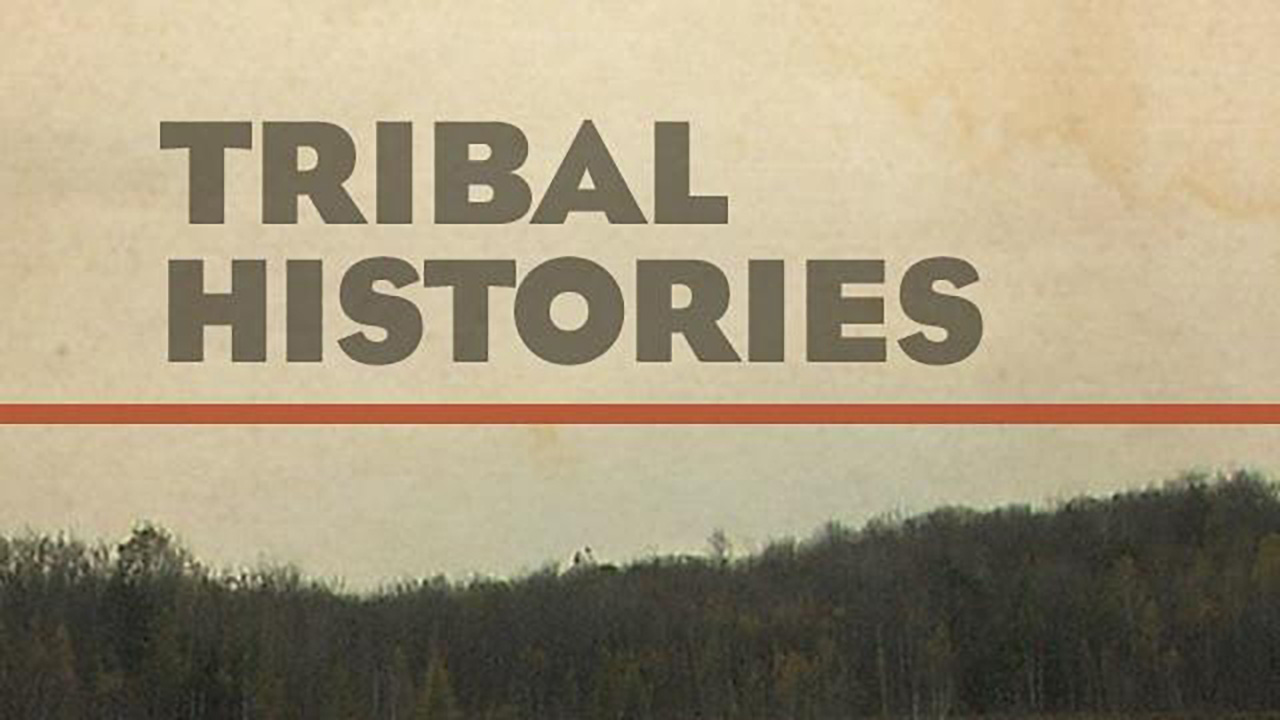
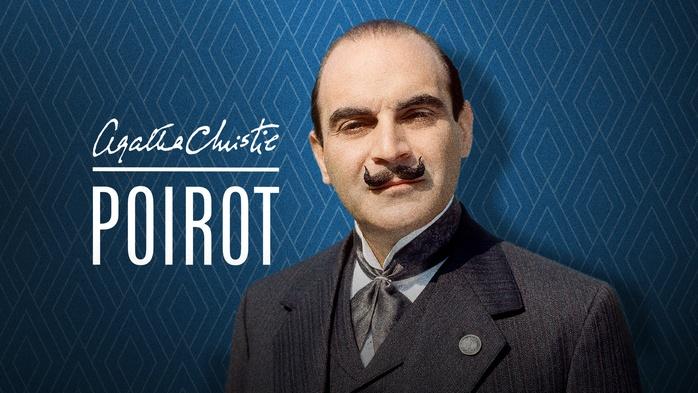

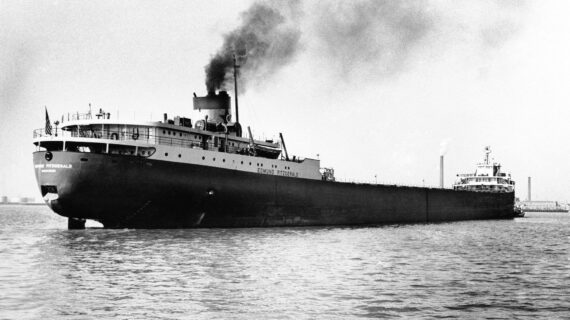
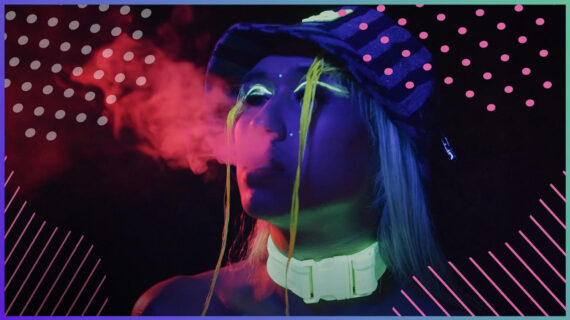
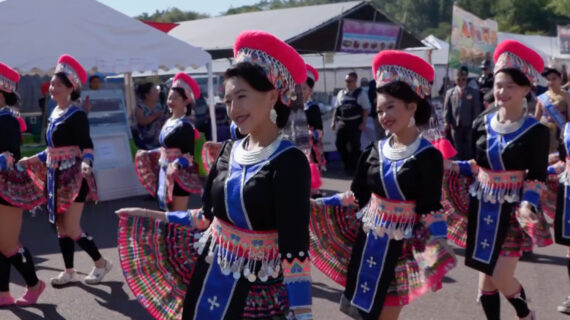
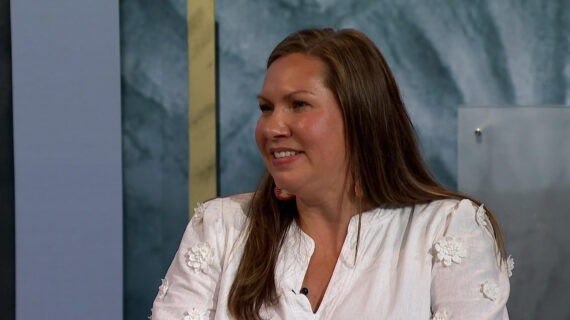
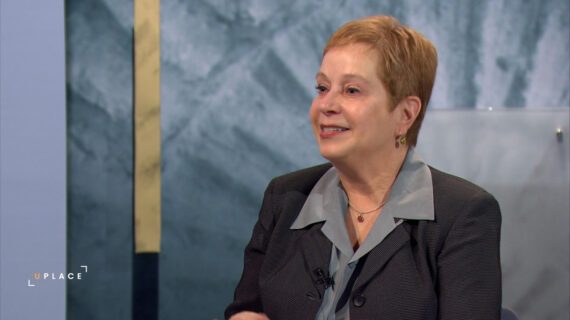
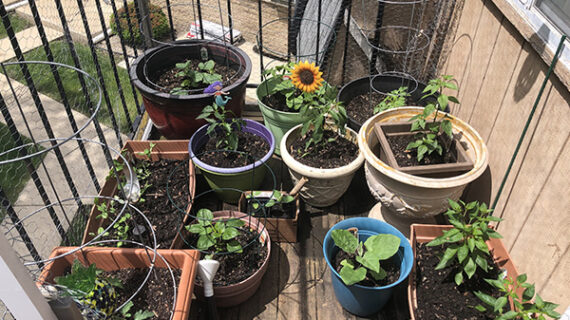
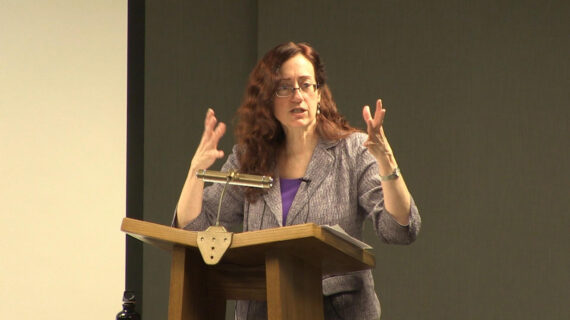
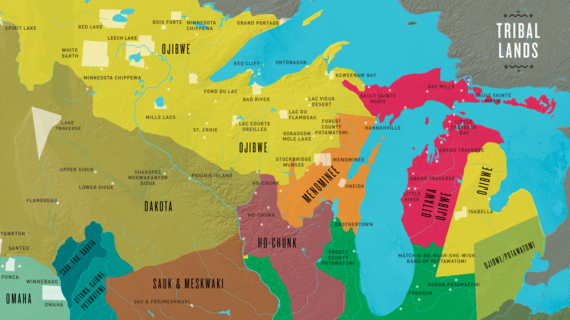
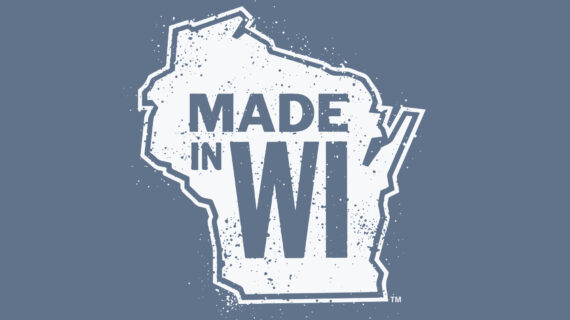
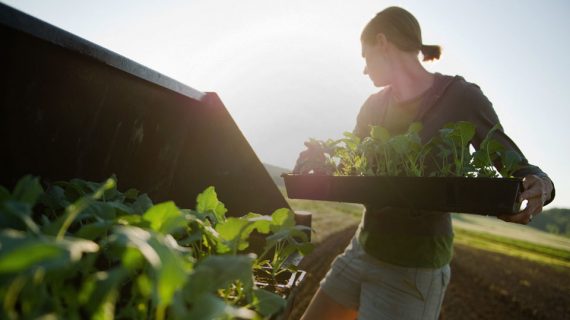
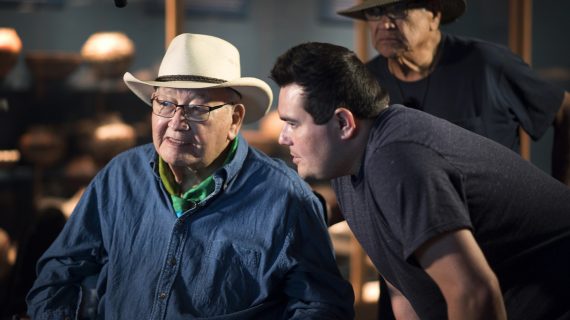


Follow Us